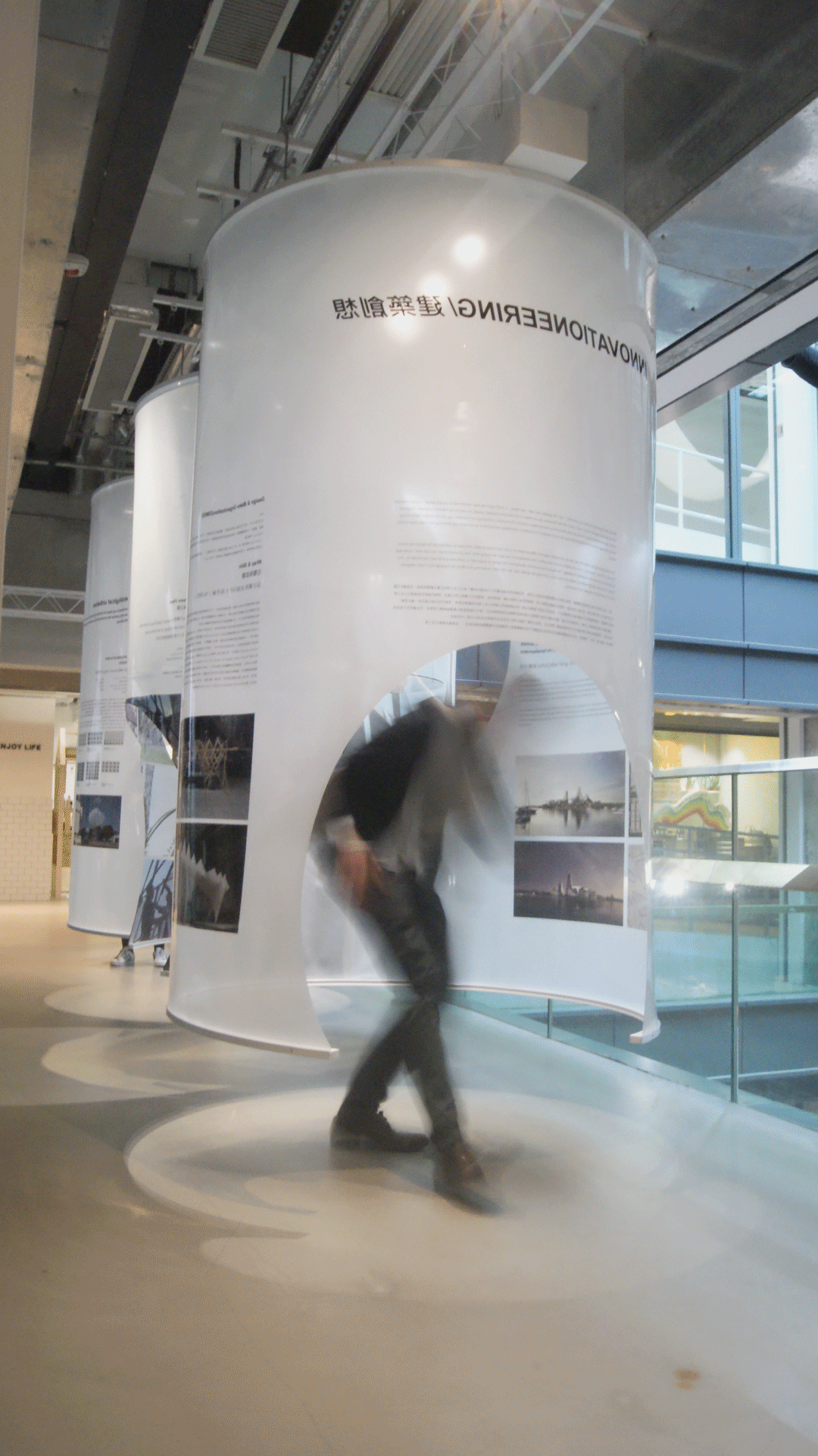2019 Hong Kong Biennale of Urbanism Architecture






2019 Hong Kong Biennale of Urbanism Architecture
2019深圳雙年展-城市交互
2019 UABB-Urban Interactions
Coordinator Jun Tsai, MAUD
Simon Chen, MAUD
MCU╳MAUD-innovationeering
我們一直在思考明日的城市到底是什麼模樣,而這必須從以台灣這樣的科技巨人來說,科技業如何在過去數年之中快速的改變了城市以及人們的社會互動開始談起。在這樣的互動中已經不僅止於人們之間的互動、城市與人們的互動,而甚至於虛擬空間與人們、物質與科技之間的互動。追根究柢,這樣的巨大變革之所以產生,根植於創新的思維演化以及工程技術的不斷變革,而建築學置身於在這樣的城市互動變革之下,能為自己找到什麼樣的出路? 因此建築能否以創新以及工程的思維換位思考,來對於明日城市產生新一番的見解?
We have been researching about what our city of tomorrow may look. This question starts with how Taiwan’s tech giants have been transforming the city and how people have interacted with the rapidly changing technologies in the past 5 years. Such interactions are not limited to the interactions among people, but extend to the interactions between the virtual and people, material, and technology. The bottom line: the enormous transformation came from the evolution of thinking in an innovative way, and the endless reformation of engineering technology. So how does architecture find its way in this situation? Is it possible to think/design architecture in an innovative way which brings out a new vision of architecture?
這樣的變革已經在幾個層面上改變了人們和城市的互動,對於台灣未來城市樣貌的主張同時回應著全球經濟與政治,城市已經發展得比環境能夠應付得更多,而永續再生已經成為了基本共識。工業與經濟的發展已經迅速的在全世界重新組構人們的生活,同時也改變了傳統中國以及其他亞洲國家在全球化社群之中的角色。
銘傳大學致力於研究此並試圖在不同的議題層面上回應這些不斷變動的城市狀況,,並根植於創新以及工程,而這樣的議題可以被分為三個不同的層面。
This transformation has affected, in multiple levels, the way people interact with the city and directs the future global economy and politics. The urban development has grown beyond what the environment can bear, and sustainability has become a mutual assumption. Industrial and economic developments are quickly reshaping the global living experience and have raised China and other Asian countries to major players in the global network. Ming Chuan University has been researching and taking the challenge into 3 main categories rooted in innovation and engineering.
-社會層面:
建築在社會議題上一直希望能夠扮演不僅僅只是提供庇護所的角色。對於今日的土地限縮、高房價、氣候變遷、乃至於社群多元等等議題上,建築人同樣希望能夠以不同的切入點,以創新的思維來應對這些社會議題。
在這部分將會有三件來自銘傳大學建築系的設計作品,討論當代台灣的建築環境下,傳統的市場及社會型態如何被改變。
-Social engineering:
Architecture always plays more than a role of asylum in social issue. Towards the issues of limited land, high housing rate, climate change and the diversified community, architects also wish to face these issues in an innovative way of thinking with different perspectives.
-能源永續層面-
建築從古至今都是一個高消耗資源的產業,在建築過程中產生的大量廢棄物、汙染至今仍為人所詬病,現今有許多建築師試著以低耗能的材料、工法來嘗試著突破這個困境,而為了回應這個主題,我們提出了許多不同針對永續建築議題上的想法。在這部分將會有三件來自銘傳大學建築系的設計作品,回應氣候變遷下,新型態的建築因應方式。
-Ecological urbanism
Architecture has been an industry of high-cost resource for centuries. People are still discussing how the waste during construction pollutes the environment. Now architects are trying hard to use ecological material, construction method to break the dilemma. To respond this issue, 3 projects from MCU will be discussing new types of architecture in climate change.
-實踐層面:
創新基於用新的技術與思維看待事物,而工程同樣的以更精準、更有效率的方式來處理各種問題。建築為了跨出以傳統高人力密集、受制於技術而僅限於水平垂直加工的方式,以各種電腦輔助加工、精密機具生產的創新模式開始漸漸被放入建築的設計及生產之中。在這部分會有來自台灣三個不同事務所及顧問組織MAUD、DMO、MORPHO的1比1實踐作品。
Make to change:
Innovation is about looking at things with a perspective of new technology and thinking, while engineering studies ways to achieve higher precision and efficiency. Nowadays, in order to break the traditional way of construction, computer-aided design and precision machinery are introduced to the production line of architecture design. In this part there will be 3 projects from different organization and firms: MAUD, DMO and Morpho.
Status: Completed
Year: 2019
Project Leader: Jun
Client: HKDI
